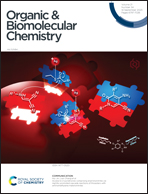A decade update on the application of β-oxodithioesters in heterocyclic synthesis
Abstract
The diverse synthesis of heterocyclic compounds has always been one of the popular subjects of organic chemistry. To this end, great efforts have been devoted to developing new reagents and establishing new strategies and methods concerning efficiency, selectivity and sustainability. β-Oxodithioesters and their enol tautomers (i.e., α-enolic dithioesters), as a class of simple and readily accessible sulfur-containing synthons, have been widely applied in the construction of various five- and six-membered heterocycles (e.g., thiophenes, thiopyrans, thiazoles, pyridines and quinolines) and other useful open-chain frameworks. Due to their unique chemical structures, β-oxodithioesters bear multiple reaction sites, which enable them to participate in two-component or multicomponent reactions to construct various heterocyclic compounds. In the past decade, the application of β-oxodithioesters in the synthesis of heterocycles has made remarkable progress. Herein, an update on the recent advances in the application of β-oxodithioesters in the synthesis of heterocycles during the period from 2013 to 2023/06 is provided. According to the different types of rings concerning heteroatoms in products, this review is divided into five sections under discussion including (i) synthesis of sulfur-containing heterocycles, (ii) synthesis of sulfur and nitrogen-containing heterocycles, (iii) synthesis of nitrogen-containing heterocycles, (iv) synthesis of nitrogen and oxygen-containing heterocycles, and (v) modification to other open-chain frameworks.



 Please wait while we load your content...
Please wait while we load your content...